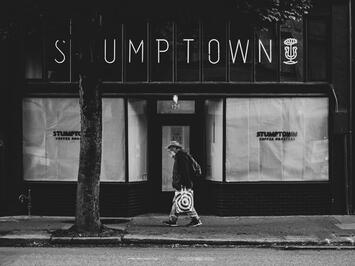
Over five millennia, urban centers have been drivers of civilization and progress, and have adapted in ways that have changed their form and function but assured their survival. Today, they are about to undergo another critical transition that will determine their relative position in the decades ahead.
Cites began as small settlements that became bigger and denser, before becoming less dense again. Walking was replaced by a transit-based culture, which was replaced in its turn by an auto-dependent culture, which is now set to be usurped by a new pattern of life based on digital commuting. Cities must now adjust to a new paradigm in the high-income West, and also in the developing world where the vast majority of the world’s largest megacities are located. In countries like India and China, the flow of people to cities appears to have slowed as urban life loses some of its appeal. What were once thought of as places of opportunity are now more often linked to deteriorating health conditions and shorter life spans.
In this emerging new reality, urban centers must find their niche. People’s choice of location is more fluid than ever before, and the home has become a primary business location. People will come to the city, not out of economic necessity nor government fiat, but because that is where they choose to settle.
The Transactional City
The new urban paradigm represents the third major urban transformation in the past century. In 1900, cities were primarily centers of manufacturing and trade in physical goods. But by the 1960s, places like New York, Chicago, San Francisco, and Tokyo jettisoned the factory-centered economy and evolved into what Jean Gottmann called the “transactional city.” This was dominated by elite business services operating out of high-rise towers—the “commanding heights” of the world economy, beneath which all others were relegated to subordinate roles.
This shift was hugely disruptive. New York, which had a million manufacturing jobs in 1950, now has less than 100,000. Los Angeles has seen industrial employment drop from over a million in 1990 to fewer than 500,000 now. Much of the old urban population moved as industrial and white-collar jobs headed to the periphery. Indeed, despite all the talk of “back to the city,” suburbs account for about 90 percent of all US metropolitan growth since 2010, a net gain of two million domestic migrants, while the urban core counties lost 2.7 million.
This is not just an American phenomenon. Since 1921, Paris’s city center has lost over 700,000 residents, while the suburbs have gained nearly eight million, according to data from the French census bureau INSEE and the United Nations. After peaking at 4.5 million residents in 1901, inner London lost 2.03 million people over the next 90 years while outer London added 2.2 million. From 1990 to 2020, the central city of Seoul lost a million residents while the suburbs (Gyeonggi and Incheon) added 8.5 million. Cities in developing countries, notes NYU’s Solly Angel, have also followed this dispersive pattern.
Read the rest of this piece at Quillette.
Joel Kotkin is the author of The Coming of Neo-Feudalism: A Warning to the Global Middle Class. He is the Roger Hobbs Presidential Fellow in Urban Futures at Chapman University and Executive Director for Urban Reform Institute. Learn more at joelkotkin.com and follow him on Twitter @joelkotkin.
Photo: Sean Benesh via Unsplash.












